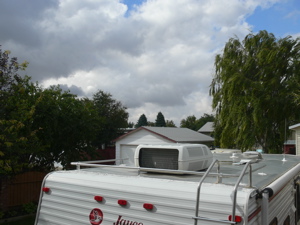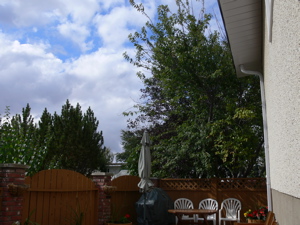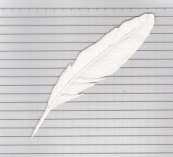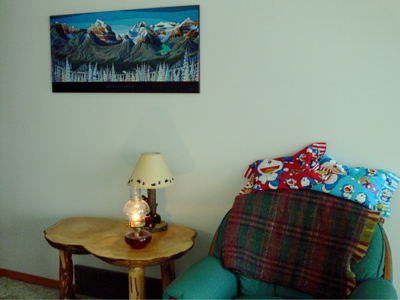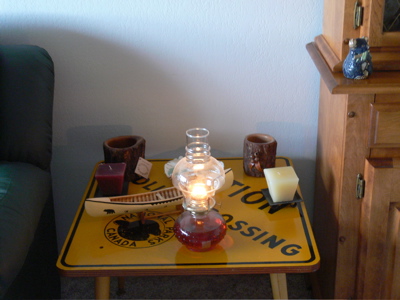 |
|
||||||||||||||
| Links to Notebook Pages: |
Friday September 22, 2006 7:00 am Lethbridge Sunrise 7:17 Sunset 19:31 Hours of daylight: 12:14
A. Morning Musings
7:00 am It is + 7 C at the moment. The forecast is the same as for yesterday - showers in the afternoon with a high of + 10 C.
B. Plan
The tea is in the pot.
I began reading "In Search of Folly" yesterday. The 16th century grammar takes a bit of getting used to, but the wit is spectacular. I hope to make time to continue this today. In general, my Literature activities have slipped during the last month and I need to get back to a more substantial commitment to this. I was thoroughly enjoying the short stories of D. R. MacDonald in "All the Men Are Sleeping" and want to return to this as well.
I want to continue working on updating my North American Birds database. This involves reviewing my photos from our trip to Virginia, editing some of them (deleting poor images, enlarging ones of the birds, and adding keywords and descriptions to them). This will then be saved as an XML file (I am curious to see how Dreamweaver handles the images) and then I will have to do some serious study on XSLT (stylesheets) so I can view the database on the Web.
Immediate Health Walk & exercise 1 hr Model Trains Review design of track layout 2 hr Puzzles The Orange Puzzle Cube: puzzle #9 Technology add keywords to iPhoto records 2 hr Install FitDay software on Mac 1 hr Purchase MindMapper software for Mac Birds Add August birds to North American data base 2 hr Model Trains Use EazyDraw to create trackplan for "new" layout 1 hr View St. Louis NRMA web site for information on track layouts 1 hr History Continue reading "Citizens" 1 hr Literature Continue reading "All the Men Are Sleeping" 1 hr Read "In Praise of Folly" by Erasmus 1 hr Later Chores Investigate water softeners for home Winterize 5th wheel Put canopy on back of truck Technology Read manual for cell phone Make notes for chap. 4 of "Switching to the Mac" Begin reading "iPhoto" digital photography - learn about using the various manual settings
Transfer Fit Day from Windows to the Mac Literature Read "The Art of Living" by Epictetus Read "The Song of Roland" Mathematics Larson "Calculus" Read "The Computational Beauty of Nature" Chap 3 Gardner "The Colossal Book of Short Puzzles" History Watson "Ideas" Model Trains Build oil refinery diorama: add ground cover Add blue backdrop to layout Assemble second oil platform kit
C. Actual/Notes
8:30 am We are back from our one hour walk around Nicholas Sheran lake. With a stiff breeze blowing it was definitely invigorating. But I need to do more of this. My weight has crept up to 195 which means I should lose 10 - 15 pounds. Nothing like a challenge to motivate me. The walks are an important component but the other component is smaller portions when eating.
I recall using a software program called FitDay (Windows version). I will see if I can get it transferred over to the Mac.
This reminds me of two other software programs that I should work on. One is a graphics drawing program that I installed on the Mac some time ago and have yet to make a decision on purchasing. The other is the mind mapping software that I downloading on a 21-day free trial. The good news with both of these programs is that they are Mac compatible.
I used the Spotlight feature of OS X with the word "draw" and quickly found the program called EazyDraw. I am not sure why it didn't appear in my Applications folder. The Spotlight window shows the path name when the cursor is left over any of the files that it has identified (great!). It seems that when I normally use the Mac my identity is "user". I also have a folder called "Dale" which contains an Application folder. EazyDraw is in that folder. Now to see if I can figure out how to use it to create a diagram of my new track layout.
9:00 am I need it to draw an accurate plan of my "new" track layout.
But before I do this, I need to slow down and make sure that I am comfortable with the ideas embedded in my sketch that I made last night. I have a printout from the St. Louis NRMA branch ( http://www.gatewaynmra.org/designops.htm ) that I want to reread and make a few notes on. In fact, the entire web site ( http://www.gatewaynmra.org/ ) is spectacular! There is much here I should read before proceeding with my plans.
Here are a number of points that I should keep in mind as I proceed. I will create a checklist for this.
Set layout up so it is operational quickly. Add details and enhancements over time.
- This means that I want at least one mainline loop operational first so I can run trains continuously.
- Looking at my sketch this means the track from the coal mine to Paradise Valley.
The final design should evolve through a combination of planning, practice and modification.
- This means getting the mainline operational first and running trains on it to see how easy it is to use.
Attach mainline track with thumb tacks and wire for conventional DC before switching to DCC "The primary goal in layout design is to create a railroad."
- This means aiming for realistic operation.
- All structures should satisfy the criterion of moving something from one place to another.
- Mainline operation should reflect real situations (e.g. passing sidings)
"The length of your passing sidings determines the length of the trains you can run."
- All 3 sidings can be fairly long. The shortest would be on the bookcase wall, which would be about 4' (about 8 cars).
"The number of passing sidings determines the number of simultaneous trains you can run on the mainline"
- I think I can have 3 passing sidings, one on each wall of the room.
No Duck-unders. The operator should be able to easily move around the layout. A scenic divider permits one to separate the different areas, giving a more realistic appearance.
- I plan to have one scenic divider separating the two towns (Paradise Valley and Coaldale)
- I think I will have a second scenic divider separating Paradise Valley into a farming district and a lumbering district, but I will wait until I have this set up before making a final decision.
Reaching distance should be less than 30"
- All tables are 24" wide.
Operator aisles should be at least 28" wide.
- My main aisles are 24" wide. I have one dead-end aisle of 16" that I have been using without difficulty. This is definitely something I want to test as soon as I have my tables set up.
Walk-around control is essential.
- I plan to use radio DCC throttles.
Place layout controls (e.g. turnouts) on the fascia near the portion of the layout they control The current trend is towards "eye-level" table heights (i.e. 52")
- My tables are built to a height of 40". This seems to me to give a nice balance between eye-level and a "birds-eye" view. It also allows me to see what is going on at the back of the layout.
Avoid long tunnels. One should be able to see part of the train at all times. Design to have a train running continuously. Design for single track use, not double track. "It is usually best to model one large terminal and let the rest of the layout act as a "staging" for trains arriving and leaving the terminal."
- My large terminal (Coaldale) will be the yard on the east wall. The town of Queenstown will act as a staging area for trains arriving from the yard.
"Yards are supposed to be operated, not to act as storage."
- My large terminal will be along the east wall. This is 2' wide and about 10' long which should give me plenty of space for a good switching yard. This will be where trains are created and sent out onto the mainline. It will have a station on the mainline (nearest the aisle).
"Real railroads try to make industrial trackage as simple as possible, so avoid the impulse to design a "switching puzzle" into your layout."
- I am not sure about this. I may put the John Allan "Timesaver" layout along the north wall where it doesn't interfere with anything and where it can provide hours of puzzle fun.
Give station names appropriate to what is being modeled.
- Since my layout is a freelance geographic area using 1950's era CN locomotives I can name my locations freely. Initially I have Coaldale, Queenstown, Black Diamond and Paradise Valley. Each name has some personal significance for me.
"Name everything on the layout."
Coaldale (main terminal) Queenston (switching yard) Black Diamond (coal mine) Pine Ridge (lumber mill) Distillery Row (refinery) Paradise Valley (farming) The Channon (village) I need to do more reading on yard layouts Once the basic mainline is set, I need to think about what scenery can fit into this. At the same time I need to consider placement of buildings. Overall, I seem to be on track. The next step is to use EazyDraw to create a diagram of the proposed layout.
In the above diagram brown indicates the walls of the room, white the table surfaces for the layout, red the mainline track and yellow the walk-around aisles. There will be some rounding of the table corners. But this gives the basic idea. Coaldale will be the right hand side, Queenstown the second horizontal line from the top, Black Diamond the bottom left corner,
1:40 PM I have just finished reading "Whatever's Out There", one of the short stories in D. R. MacDonald's collection "All the Men Are Sleeping". What a fantastic yarn! I couldn't put it down. His ability to build suspense out of the most ordinary of situations is incredible. He also captures the nature of life at age 60 better than anyone I have read. Finally, for reason's that are difficult to fathom, I now have the urge to locate our kerosene lamps and light them.
"... He finished coiling a thin rope he'd been holding and set it on the table where an oil lamp burned.
"That's romantic,' she said. 'Or is the power gone out?'
"Neither one. I like that kind of light sometimes is all."Perhaps it is the coolness of the day, the overcast sky and dim light. ... We haven't use these lamps in years. Use it or lose it. The lamps will stay.
D. Reflection
